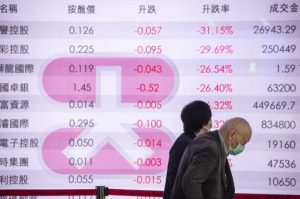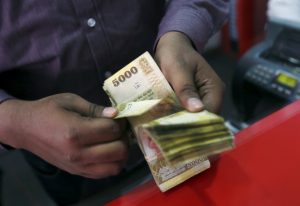Some Asian central banks are shaking off their long-held reluctance to follow their global peers in lifting benchmark interest rates off historic lows, as the Ukraine war blows consumer prices well out of policymakers’ comfort zones.
The region’s economies have largely lagged behind US and European re-openings from the pandemic and central banks have until now mostly looked past the inflation pressures caused by global supply snags, and focused more on shoring up their recoveries.
This week, however, there has been a marked shift in the language of some of the region’s less hawkish central banks on worries the renewed surge in commodity costs caused by Russia’s invasion of Ukraine could destabilise their economies.
Australia’s central bank on Tuesday dropped a previous pledge to be “patient” in its assessment of current conditions, taken widely as a signal that the door was now open to the first interest rate increase in more than a decade.
Reserve Bank of Australia (RBA) deputy governor Michele Bullock said on Wednesday the change in the policy outlook reflected growing evidence of inflation pressures.
“It seems external inflation dynamics have become enough for the RBA to pre-emptively flag a shift,” Ben Jarman, an economist at JPMorgan, said.
“The RBA guidance suggests upcoming consumer price index and labour cost data are likely to clinch the case for normalisation,” he said, projecting the first rate hike to come in June from the previous forecast for November.
Setting the global pace, the US Federal Reserve raised rates for the first time since 2018 last month and looks on track for an aggressive tightening cycle to fight surging inflation.
In the Philippines, central bank governor Benjamin Diokno said on Tuesday he was ready to take “pre-emptive action” if “inflation expectations” risked becoming “disanchored.”
His comments contrast with more passive remarks in March about being “ready to respond” and follow data that showed consumer inflation nudging the upper end of the central bank’s projected range.
Analysts currently expect the bank to raise its benchmark interest rate in the second half of this year.
The Reserve Bank of India is not expected to raise rates at its meeting on Friday. But inflation holding above the upper end of the central bank’s 6% threshold has cast doubt on its current strategy of keeping rates low to bolster growth.
Taiwan’s central bank last month surprised markets by raising rates, and some economists expect more hikes to come this year.
Inflation ‘More Challenging’ Now
“The big picture is that inflation is becoming more challenging for the region’s central banks, after being a non-issue in recent years,” Krystal Tan at ANZ said. “On balance, the odds of policy rate adjustments being brought forward are rising.”
Some Asian economies, such as South Korea, Singapore and New Zealand, already started their shifts away from pandemic-era monetary stimulus last year as surging prices unsettled policymakers.
At the other extreme, Asia’s two largest economies are a long way from tightening monetary policy, with the Chinese and Japanese central banks both in no rush to withdraw stimulus as they focus on underpinning growth.
Ironically, some of the world’s most circumspect central bankers have been in emerging Asian markets – historically seen as the most vulnerable to Fed rate rises and inflationary shocks.
Thailand, Indonesia and Malaysia remain publicly dogged in their commitment to low rates and talking down domestic prices pressures, but also acknowledge the emerging and persistent threats from global inflation.
Bank Negara Malaysia‘s governor said last week she recognised that the unprecedented conditions that heralded monetary support during the pandemic were almost over.
“So with the policy rate at its historical low, we are mindful of the consequences of keeping interest rates low for an extended period of time, which could lead to an unhealthy buildup in financial imbalances,” Nor Shamsiah Mohd Yunus said.
- Reuters, with additional editing by George Russell
READ MORE:
Brazil’s Central Bank Quadruples its Yuan Reserves
Thai Central Bank Plans Rules on Virtual Banks, Open Banking
South Korea Central Bank Nominee Says Risks Mounting
























